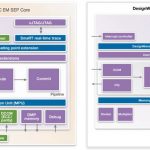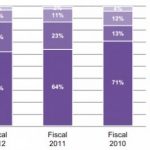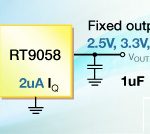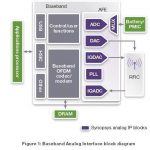Synopsys is taking IP-SOC 2013 seriously, as the company will hold several presentations, starting with a Keynote: “Virtual Prototyping – A Reality Check”, by Johannes Stahl, Director, Product Marketing, System-Level Solutions, Synopsys, highlighting current industry practice around putting virtual prototyping to work… Read More
ARC EM SEP Processor, Safety Ready Solution for Automotive
If you are familiar with Processor IP core, you certainly know DesignWare ARC EM4 core, 32-bit CPU that SoC designers can optimize for a wide range of uses, and differentiate by using patented configuration technology to tailor each ARC core instance to meet specific performance, power and area requirements. If you develop a product… Read More
TSMC ♥ Synopsys (HSPICE)
In case you haven’t noticed, Synopsys has been in the press lately talking about their relationship with TSMC. Since I’m an internationally recognized industry expert they gave me a call for a briefing and I was happy to do it. Staying connected with the #1 EDA company is important and fun since I get to ask questions that most people… Read More
An ASIC Design Flow at LSI
Harish Aepalais part of the Design Closure Methodology group at LSIand he recently talked about his ASIC handoff experience in a webinar. Harish works with logic and physical synthesis, timing constraints, RTL analysis and formal verification.
One challenge with ASIC handoff has been getting through design closure with the… Read More
Synopsys: Getting To Know EDA’s Heavyweight Champion
From chip IP vendor ARM Holdings to semiconductor foundry Taiwan Semiconductor, there have been many winners from the mobile device revolution that was sparked by Apple’s introduction of the iPhone. However, while these big-ticket names get all the fame and glory, the electronic design automation space (“EDA” for short) is … Read More
Stick to the script for repeatable FPGA-based prototyping
70% of today’s ASIC and SoC designs are being prototyped on FPGAs. Everybody knows that. But, did you know that automating the process of converting what could be thousands of ASIC “golden” files into FPGA-friendly versions can mean big savings in a large design?… Read More
Designing Power Management ICs
With all the focus in design on SoCs in the latest sexy process (Hi-K Metal Gate! FinFETs!) it is easy to forget all the other chips that go into a system. When we say “system on a chip” there are actually very few systems that really get everything onto a single chip. One of the big areas that usually cannot go on the latest… Read More
Interface PHY IP supporting Mobile Application on TSMC 20nm? Available!
If we check the many articles daily published in Semiwiki, I am sure that Moore’s Law has been mentioned every single day. There is a good reason why we constantly write about new technologies and advanced features like FinFet, FD-SOI, 450 mm wafers or double patterning: all of these are new challenges that the SC industry will have… Read More
How to Design an LTE Modem
Designing an LTE modem is an interesting case study in architectural and system level design because it is pretty much on the limit of what is possible in a current process node such as 28nm. I talked to Johannes Stahl of Synopsys about how you would accomplish this with the Synopsys suite of system level tools. He is the first to admit… Read More
Searching an ADC (or DAC) at 28 nm may be such a burden…
If you have ever send a Request For Quotation (RFQ) for an ASIC including processor IP core, memories, Interfaces IP like PCIe, SATA or USB and Analog function like Analog to Digital Converter (ADC) or Digital to Analog Converter (DAC), you have discovered, like I did a couple of years ago, that these Analog functions may be the key… Read More











